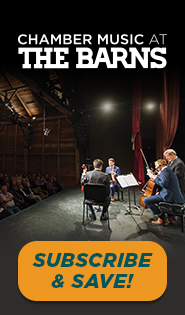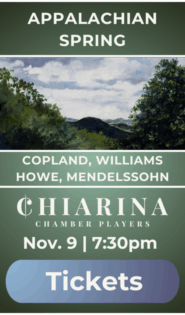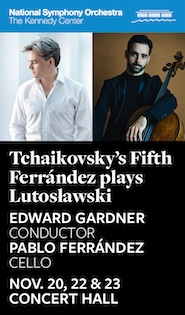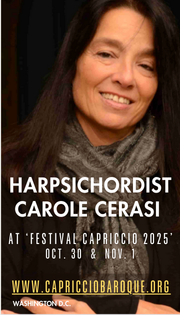Bignamini steps in impressively to lead NSO’s cinematic Roman holiday
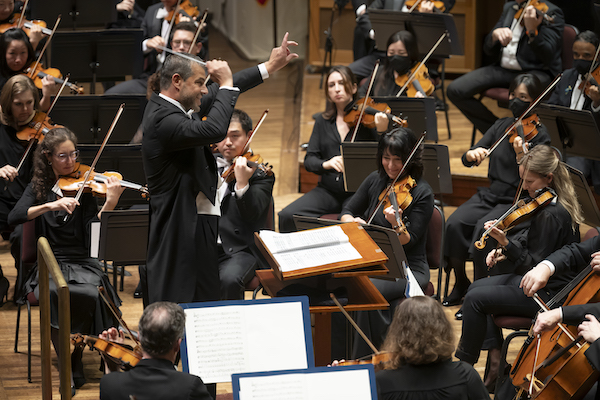
Jader Bignamini conducted the National Symphony Orchestra in music of Respighi Thursday night at the Kennedy Center. Photo: Scott Suchman
Gianandrea Noseda meant this week’s concerts with the National Symphony Orchestra as a guided tour of his homeland. Instead, after Noseda tested positive for Covid earlier this week, another Italian conductor, Jader Bignamini, served as cicerone for this program of Ottorino Respighi’s complete Roman Trilogy. It was a surprise NSO debut for the music director of the Detroit Symphony Orchestra, heard Thursday night in the Kennedy Center Concert Hall.
It was fortunate that Bignamini happened to be in Detroit this week, and without a program of his own to conduct. He was able to preside over the NSO’s full rehearsal time, and he led the first two, far more familiar pieces from memory.
Respighi composed Fontane di Roma, a suite of four conjoined pieces depicting some of Rome’s most famous fountains, in 1916, only a few years after he had moved to Rome from his native Bologna. The “Valle Giulia” movement opened with soft-pedaled strings and percussion, allowing pastoral woodwind solos to awaken peacefully in this watercolor-limpid morning scene.
To mark the start of the second movement, the French horns gave boisterous voice to the upheld conch shell blown by the Triton in Bernini’s most famous fountain, heard as the opening motif. Bignamini set and maintained an incisively fast tempo, working the foamy cascades of sound from brass and metallic percussion into furious sprays.
In the third movement, “La fontana di Trevi,” the shooting water of Rome’s largest fountain grew in a vast crescendo of brass swells. Again a brisk pacing from Bignamini churned this climactic movement into an exciting mass of sound, with crisply articulated trombones burbling beneath the surface along with the Concert Hall organ’s rumbling pedal pipes. The music calmed again as the final movement evoked the fountain of the Villa Medici at sunset, settling into a lush E major, with a bell tolling softly in the distance on D.
In the longer Pini di Roma, from 1924, Respighi became even more adventurous with orchestral color, depicting four Roman scenes witnessed by the city’s emblematic umbrella pine trees. In the first movement, Bignamini went for a brash interpretation of children playing in the Villa Borghese gardens, complete with quotations of Italian nursery songs. Percussive rasps and chimes danced, strings mocked and brayed, and as the chaos mounted, the trumpet relished its obstinately dissonant jeering notes.
Gregorian chant melodies soared mysteriously in the horns in the “Catacombs” movement, echoed by a ghostly trumpet solo played from off-stage. This built into a triumphant final statement, anchored on the trombone. Velvety strings evoked the moonlight on the Janiculum Hill in the third movement, setting the stage for Lin Ma’s dreamy clarinet solo. The cellos, oboe, and eventually a wall of violin sound took up this tune. When the clarinet returned, the recorded sound of a nightingale singing came from a speaker far above the floor, as if actual birds had roosted in the rafters.
The stereophonic effects continued in the final movement, depicting the marching of Roman legions along the Appian Way. Positioned in the right balcony, a brass ensemble of pairs of trumpets, French horns, and trombones took the crucial parts for six buccine, or ancient circular trumpets. Building from its beginnings in B-flat minor, the piece grew until it exploded into a technicolor major-key blast with double cymbal crashes and ear-shattering volume. The ovations were so intense that Bignamini had time to invite each instrumental section to stand one by one.
After that climax came the final installment, Feste Romane from 1928. Three trumpets took the buccine parts in the first movement, “Circenses,” and again their placement in the balcony out among the audience highlighted the antiphonal effect of the writing. The chanting of martyrs in the arena, in a sort of repeated litany, vied with a wilder cacophony around them. In the second movement, foreign pilgrims reached Rome, singing the old German Easter hymn “Christ ist erstanden,” in another carefully marshaled crescendo.
The horn section’s audacious hunting calls led the harvest festival of “L’Ottobrata,” answered by brilliant trumpets. A dance of skittering repeated notes gave way to an amorous serenade, led by a beautifully played mandolin solo. A much-needed moment of levity came in the finale, “La Befana,” a description of the raucous market scene in Piazza Navona at Epiphany. A sneering high clarinet opened the chaotic proceedings, with harmony and rhythmic activity indebted to the Shrovetide Fair scene in Stravinsky’s Petrushka.
A crazed saltarello, overlaid with a calliope-like circus piece, created an Ivesian palimpsest of sounds and ideas. The trombone took up the saltarello tune in the style of a drunken partier singing along, complete with slurred glissandi and metric hiccups. Bignamini oversaw all these chimeric shifts of character with a cool hand, bringing the whole wild rumpus to a berserk conclusion.
The program will be repeated 11:30 a.m. Friday and 8 p.m. Saturday. kennedy-center.org
